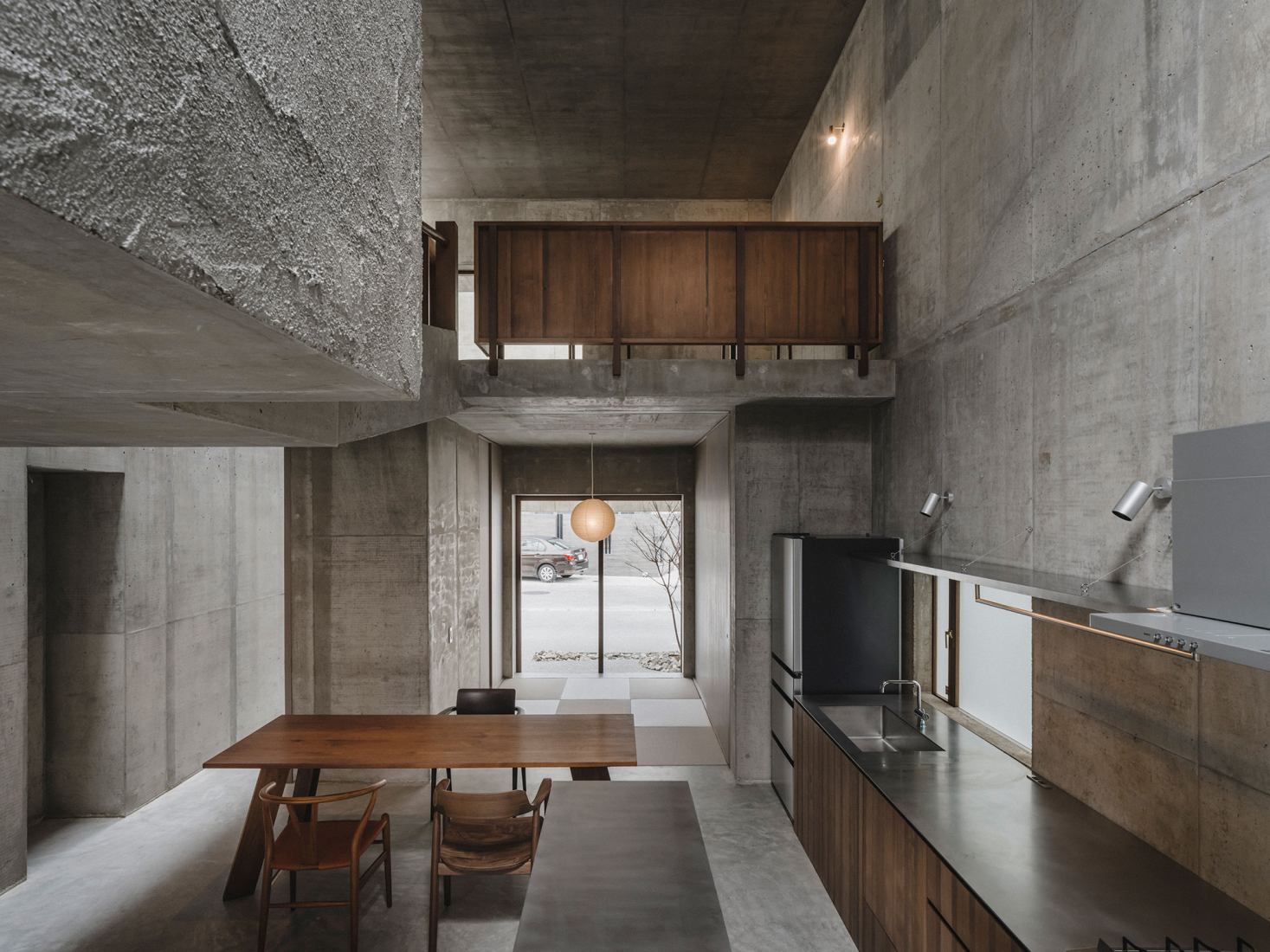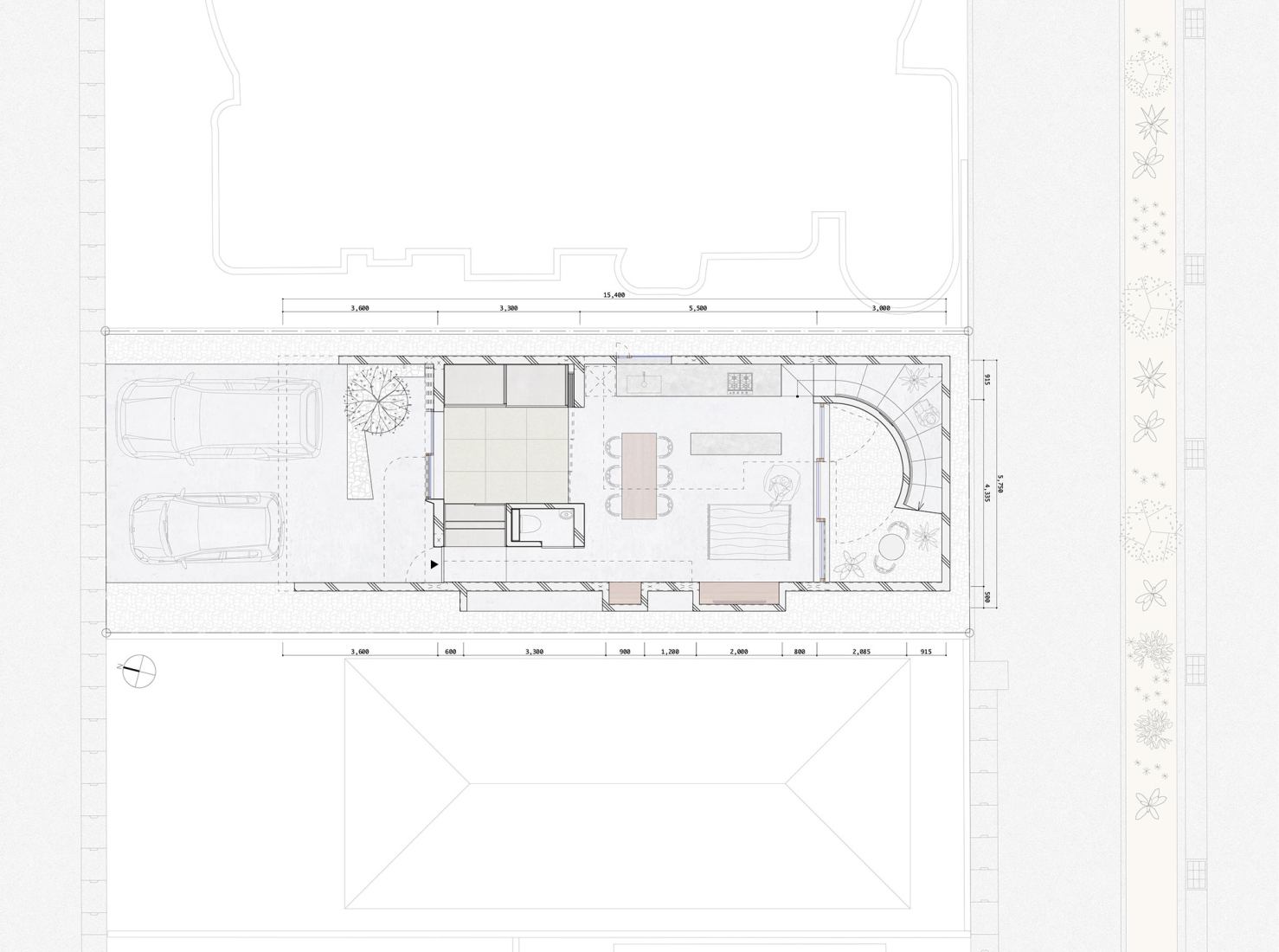Concrete becomes the protagonist of the project due to its opaque appearance that functions as a disconnection barrier between the city and the home interior. The wooden furniture, made by the architects, in a traditional way, contrasts with the concrete that bathes the house, creating different points of reference inside.

House in Nishizaki by Studio Cochi Architects. Photograph by Ooki Jingu.
Project description by Studio Cochi Architects
This house is a residence for a couple and a child. The site is located in a newly developed residential area in the southern part of the Okinawa main island, which was reclaimed by landfill.
The surrounding area is a mix of commercial facilities, industrial parks, residences, schools, sports parks, fishing ports, and other buildings of various uses and scales. To the north of the site is a zoned residential area, and to the south, a commercial area stretches across a large highway. As a result, the north side is relatively quiet throughout the day, but the south side is noisy at times due to heavy traffic. Furthermore, the east and west sides of the site are in close proximity to neighbouring houses.
In developed areas, houses are densely built and the number of vacant houses is on the increase. While Okinawa has a unique and majestic natural environment, urban areas have this chaotic landscape. In addition, typhoons occur throughout the year, and one must be prepared for disasters. In such an environment, the challenge was to maintain distance from the city and to ensure a comfortable indoor environment.

House in Nishizaki by Studio Cochi Architects. Photograph by Ooki Jingu.
The client requested to live without worrying about the line of sight from the surrounding area and to let in as much light and wind as possible. The building has a rectangular plan that matches the shape of the site, with public rooms on the first floor connected to the town, and private bedrooms and bathrooms on the second floor.
The courtyard and skylight are located in the north-south direction, where light and ventilation can be easily obtained. The courtyard on the north side, which faces the residential area, functions as a buffer zone with a gradual gradation that does not become too close to the town by making it a continuous space with the approach and the tatami room, which is also a parlour while taking into consideration the line of sight to the interior. On the other hand, the courtyard on the south side functions as a thick and solid buffer zone between the town and the staircase room, enhancing the livability of the courtyard and the living room.
The staircase is also intended to be used as a dimly lit room, so it is a little roomier than a normal staircase to accommodate chairs and other items. By creating a strong and weak buffer zone with the city, we believe we have created a three-dimensional house with wind and light that can accommodate the various activities of daily life in a densely populated residential area.
In addition, most of the furniture and fittings were made in my own workshop. I would like to expand the possibilities of craftsmanship that are not dependent on the mainland but are provided within the prefecture.





























































